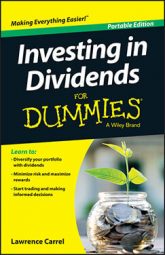If dividends meet certain qualifications the Jobs and Growth Tax Relief Reconciliation Act (JGTRRA) reduced the dividend tax rate from the investor's ordinary income tax rate to a maximum of 15 percent for most taxpayers or 5 percent for taxpayers in the 10- to 15-percent tax brackets.
This tax cut represented a huge savings for dividend investors, as shown in the table, which compares the old and new rates, their pieces of your dividend per $1,000, and how much the new rates save you.
| Old Tax Rate/Bracket | New Tax Rate | Old Tax | New Tax | Savings |
|---|---|---|---|---|
| 10% | 5% | $100 | $50 | $50 |
| 15% | 5% | $150 | $50 | $100 |
| 27% | 15% | $270 | $150 | $120 |
| 30% | 15% | $300 | $150 | $150 |
| 35% | 15% | $350 | $150 | $200 |
| 38.6% | 15% | $386 | $150 | $236 |
These new, lower tax rates triggered three major changes in the market:
They leveled the playing field for growth and income investors. Prior to this act, growth stocks were more attractive from a tax perspective because capital gains were taxed at a significantly lower rate than dividends.
The tax cuts put more money in taxpayers' pockets, fueling the economy. Dividend-paying companies could afford to pay higher dividends, and as demand for stock rose, so did share prices.
More companies started paying dividends. Reduction of the long-term capital gains tax in the early 1980s triggered a trend of decreasing dividend payments. To avoid high taxes on dividends, more companies invested more of their profits in growth, and investors preferred reaping their rewards in capital gains, which were taxed at a lower rate. The JGTRRA reversed this trend.

